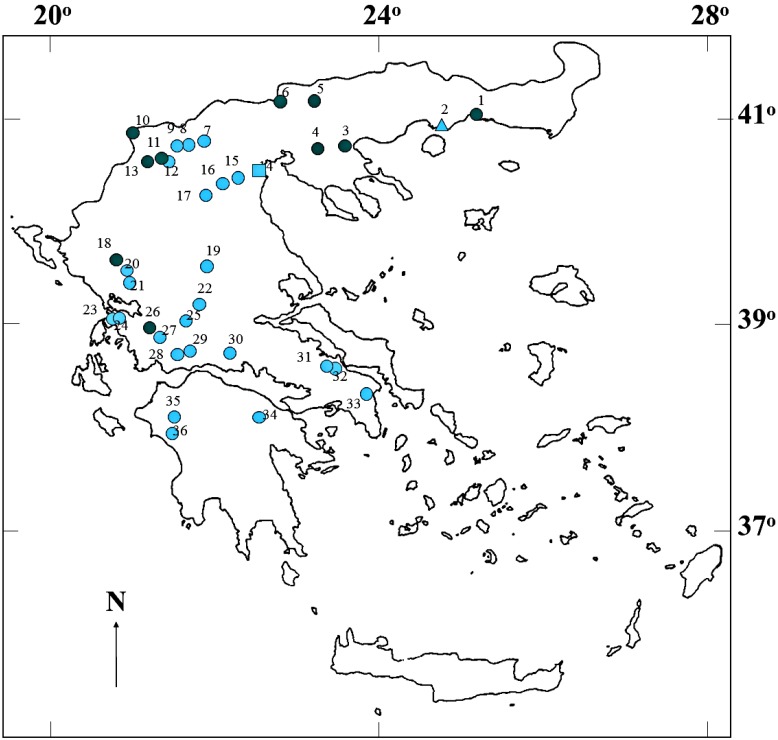Figure 1.
Map of Greece showing the locations of the 36 water bodies (circles: natural lakes and reservoirs, rectangle: river, triangle: lagoon), examined for the occurrence of cyanobacterial peptides. Blue-green and light blue symbols indicate water bodies with or without blooms during sampling, respectively. The numbers 1 to 36 identify the water bodies: (1) Lake Vistonis; (2) Vasova Lagoon; (3) Lake Volvi; (4) Lake Koronia; (5) Kerkini Reservoir; (6) Lake Doirani; (7) Lake Agra; (8) Lake Vegoritis; (9) Lake Petron; (10), Lake Mikri Prespa; (11) Lake Zazari; (12) Lake Cheimaditis; (13) Lake Kastoria; (14) Aliakmon River; (15) Asomaton Reservoir; (16) Sfikia Reservoir; (17) Polyphyton Reservoir; (18) Lake Pamvotis; (19) Tavropos Reservoir; (20) Louros Reservoir; (21) Pournariou Reservoir; (22) Kremaston Reservoir; (23) Lake Saltini; (24) LakeVoulkaria; (25) Lake Kastrakiou; (26) Lake Amvrakia; (27) Lake Ozeros; (28) Lake Lysimachia; (29) Lake Trichonis; (30) Mornos Reservoir; (31) Lake Yliki; (32) Lake Paralimni; (33) Marathonas Reservoir; (34) Lake Stymfalia; (35) Pinios Reservoir; and (36) Floka Reservoir.

